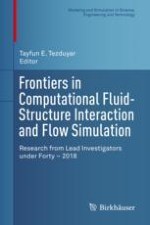2018 | OriginalPaper | Chapter
Aorta Flow Analysis and Heart Valve Flow and Structure Analysis
Authors : Kenji Takizawa, Tayfun E. Tezduyar, Hiroaki Uchikawa, Takuya Terahara, Takafumi Sasaki, Kensuke Shiozaki, Ayaka Yoshida, Kenji Komiya, Gaku Inoue
Published in: Frontiers in Computational Fluid-Structure Interaction and Flow Simulation
Publisher: Springer International Publishing
Activate our intelligent search to find suitable subject content or patents.
Select sections of text to find matching patents with Artificial Intelligence. powered by
Select sections of text to find additional relevant content using AI-assisted search. powered by
